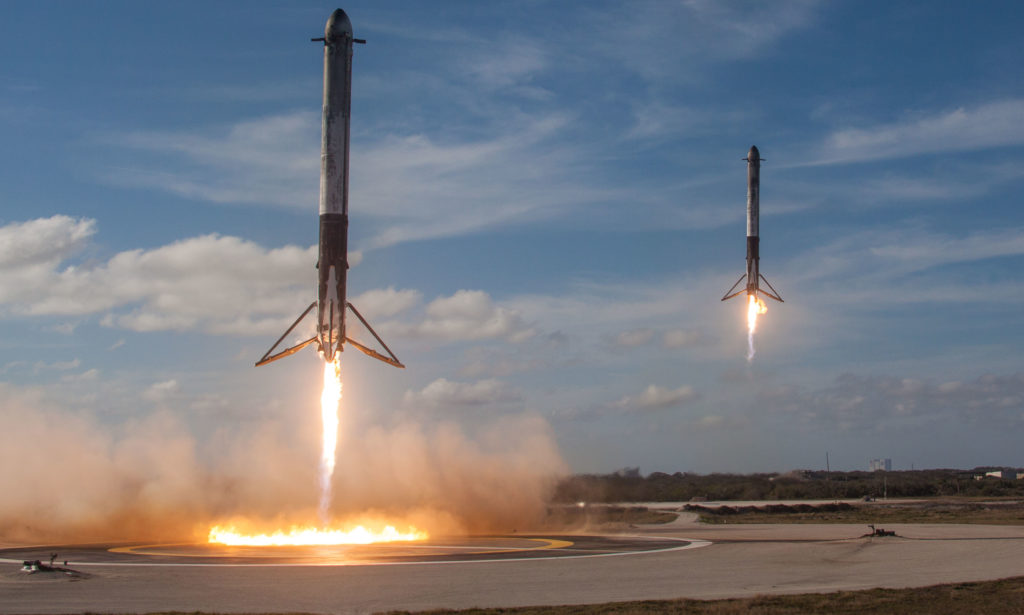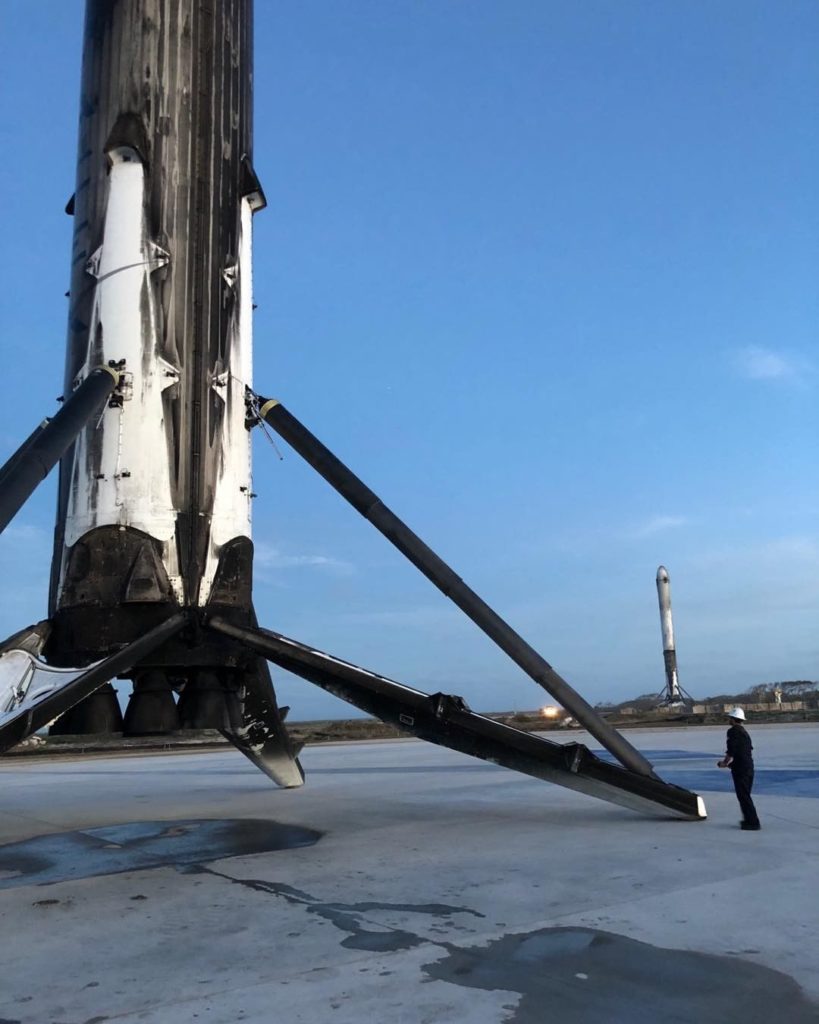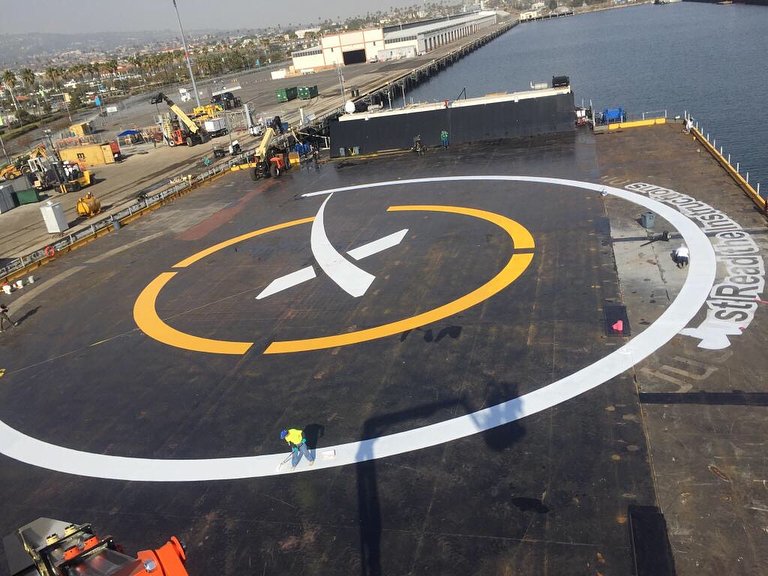
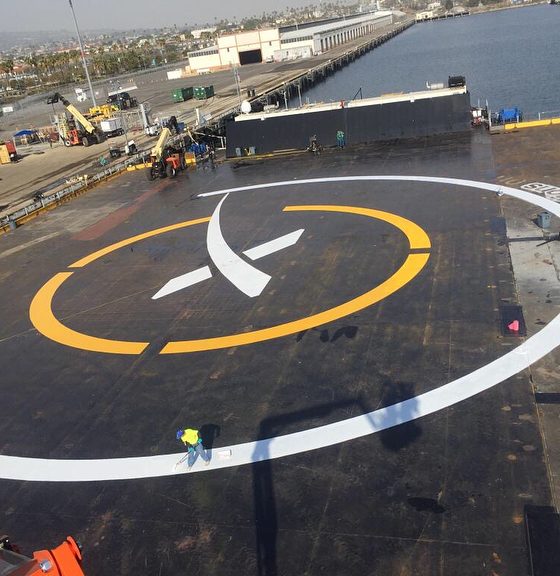
News
SpaceX to attempt “hot” Falcon 9 landing at sea in spite of heavy payload
Although SpaceX’s launch of PAZ and two Starlink demo satellites has been pushed back to Thursday by weather concerns, work back on the East coast is continuing apace in preparation for the Sunday, February 25 launch of an exceptionally heavy communications satellite.
Updated February 24: SpaceX has postponed Sunday’s launch, as it attempts to conduct additional testing on the fairing’s pressurization system. “Once complete, and pending range availability, we will confirm a new targeted launch date”, notes SpaceX.
Eloquently deemed Hispasat 30W-6 (1F), the hefty 6000+ kg spacecraft will be sent to geostationary transfer orbit (GTO) atop a brand new Falcon 9 rocket, quite a rare occurrence in the last several months. Based on the satellite’s considerable mass and public understand of Falcon 9’s performance, it was reasonably assumed that the rocket would need to launch in an expendable configuration to lift its payload to the proper orbit. However, in an unexpected turn of events, local observers with access to Cape Canaveral Air Force Base (CCAFS) or Kennedy Space Center (KSC) have observed what unequivocally appear to be grid fins and landing legs attached to the fresh Falcon 9, Booster (B)1044.
Local observers have observed grid fins and landing legs attached to the unflown Falcon 9, hinting at an aggressive landing attempt.
Further corroborating this evidence of an imminent landing attempt, Notices to Airmen (NOTAMs) have been published that indicate a possible landing location for the SpaceX rocket. NOTAMs are used to instruct aircraft and boats of potentially hazardous areas that must be avoided within a certain time frame – for those of you with memories of scrubbed launches caused by wayward boats or aircraft, these notices are what those offending individuals were supposed to be cognizant of. NASASpaceflight.com forums user Raul has kindly maintained a custom Google Maps fork that is regularly updated with data provided in NOTAMs, and serves as an invaluable visualization for those of us that do not pilot boats or planes quite as frequently as others.
SpaceX drone ship Of Course I Still Love You (OCISLY) has taken quite a beating in the past few months – most recently she was nearly speared by Falcon Heavy’s 300+ mph center core. Nevertheless, the storied vessel has been relentlessly repaired and maintained by SpaceX’s crew of recovery fleet technicians and can be expected to leave its Floridan Port Canaveral berth within the next 24 hours – so long as the company intends to attempt recovery of Falcon 9 B1044.
- OCISLY and a landed Falcon 9 return to port after the most recent successful ocean recovery, October 30 2017. (Tom Cross)
- Falcon Heavy’s stunning dual side booster recovery. (SpaceX)
- Elon Musk walks among his recovered Falcon Heavy boosters at LZ-1 and 2. (Elon Musk)
As launch photographer Tom Cross works to acquire a license that would allow him to place remote cameras nearby the drone ship, viewers can capture the drone ship landings on SpaceX’s webcast. We’ll continue to provide on-the-ground coverage of both rocket launch and landings.
Meanwhile, back on the West coast, photographer Pauline Acalin is busy covering SpaceX’s launch of PAZ and two Starlink demo satellites. Due to slightly off-nominal upper level winds, just barely violating Falcon 9’s engineering margins for wind shear, the launch attempt earlier this morning was scrubbed and pushed back 24 hours, now NET 6:17am PST Feb. 22. Although the flight-proven booster flying with PAZ will be expended in the Pacific Ocean after launch, it appears likely that the launch will feature SpaceX’s first full-on attempt at recovering a payload fairing half intact.
SpaceX’s live coverage will begin at the livestream below approximately 15-20 minutes before launch.

News
Tesla enters interesting situation with Full Self-Driving in California
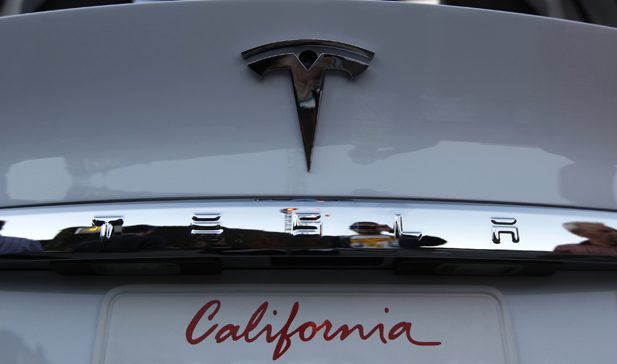
Tesla has entered an interesting situation with its Full Self-Driving suite in California, as the State’s Department of Motor Vehicles had adopted an order for a suspension of the company’s sales license, but it immediately put it on hold.
The company has been granted a reprieve as the DMV is giving Tesla an opportunity to “remedy the situation.” After the suspension was recommended for 30 days as a penalty, the DMV said it would give Tesla 90 days to allow the company to come into compliance.
The DMV is accusing Tesla of misleading consumers by using words like Autopilot and Full Self-Driving on its advanced driver assistance (ADAS) features.
The State’s DMV Director, Steve Gordon, said that he hoped “Tesla will find a way to get these misleading statements corrected.” However, Tesla responded to the story on Tuesday, stating that this was a “consumer protection” order for the company using the term Autopilot.
It said “not one single customer came forward to say there’s a problem.” It added that “sales in California will continue uninterrupted.”
This was a “consumer protection” order about the use of the term “Autopilot” in a case where not one single customer came forward to say there’s a problem.
Sales in California will continue uninterrupted.
— Tesla North America (@tesla_na) December 17, 2025
Tesla has used the terms Autopilot and Full Self-Driving for years, but has added the term “(Supervised)” to the end of the FSD suite, hoping to remedy some of the potential issues that regulators in various areas might have with the labeling of the program.
It might not be too long before Tesla stops catching flak for using the Full Self-Driving name to describe its platform.
Tesla Robotaxi goes driverless as Musk confirms Safety Monitor removal testing
The Robotaxi suite has continued to improve, and this week, vehicles were spotted in Austin without any occupants. CEO Elon Musk would later confirm that Tesla had started testing driverless rides in Austin, hoping to launch rides without any supervision by the end of the year.
Investor's Corner
Tesla stock closes at all-time high on heels of Robotaxi progress

Tesla stock (NASDAQ: TSLA) closed at an all-time high on Tuesday, jumping over 3 percent during the day and finishing at $489.88.
The price beats the previous record close, which was $479.86.
Shares have had a crazy year, dipping more than 40 percent from the start of the year. The stock then started to recover once again around late April, when its price started to climb back up from the low $200 level.
This week, Tesla started to climb toward its highest levels ever, as it was revealed on Sunday that the company was testing driverless Robotaxis in Austin. The spike in value pushed the company’s valuation to $1.63 trillion.
Tesla Robotaxi goes driverless as Musk confirms Safety Monitor removal testing
It is the seventh-most valuable company on the market currently, trailing Nvidia, Apple, Alphabet (Google), Microsoft, Amazon, and Meta.
Shares closed up $14.57 today, up over 3 percent.
The stock has gone through a lot this year, as previously mentioned. Shares tumbled in Q1 due to CEO Elon Musk’s involvement with the Department of Government Efficiency (DOGE), which pulled his attention away from his companies and left a major overhang on their valuations.
However, things started to rebound halfway through the year, and as the government started to phase out the $7,500 tax credit, demand spiked as consumers tried to take advantage of it.
Q3 deliveries were the highest in company history, and Tesla responded to the loss of the tax credit with the launch of the Model 3 and Model Y Standard.
Additionally, analysts have announced high expectations this week for the company on Wall Street as Robotaxi continues to be the focus. With autonomy within Tesla’s sights, things are moving in the direction of Robotaxi being a major catalyst for growth on the Street in the coming year.
Elon Musk
Tesla needs to come through on this one Robotaxi metric, analyst says
“We think the key focus from here will be how fast Tesla can scale driverless operations (including if Tesla’s approach to software/hardware allows it to scale significantly faster than competitors, as the company has argued), and on profitability.”

Tesla needs to come through on this one Robotaxi metric, Mark Delaney of Goldman Sachs says.
Tesla is in the process of rolling out its Robotaxi platform to areas outside of Austin and the California Bay Area. It has plans to launch in five additional cities, including Houston, Dallas, Miami, Las Vegas, and Phoenix.
However, the company’s expansion is not what the focus needs to be, according to Delaney. It’s the speed of deployment.
The analyst said:
“We think the key focus from here will be how fast Tesla can scale driverless operations (including if Tesla’s approach to software/hardware allows it to scale significantly faster than competitors, as the company has argued), and on profitability.”
Profitability will come as the Robotaxi fleet expands. Making that money will be dependent on when Tesla can initiate rides in more areas, giving more customers access to the program.
There are some additional things that the company needs to make happen ahead of the major Robotaxi expansion, one of those things is launching driverless rides in Austin, the first city in which it launched the program.
This week, Tesla started testing driverless Robotaxi rides in Austin, as two different Model Y units were spotted with no occupants, a huge step in the company’s plans for the ride-sharing platform.
Tesla Robotaxi goes driverless as Musk confirms Safety Monitor removal testing
CEO Elon Musk has been hoping to remove Safety Monitors from Robotaxis in Austin for several months, first mentioning the plan to have them out by the end of 2025 in September. He confirmed on Sunday that Tesla had officially removed vehicle occupants and started testing truly unsupervised rides.
Although Safety Monitors in Austin have been sitting in the passenger’s seat, they have still had the ability to override things in case of an emergency. After all, the ultimate goal was safety and avoiding any accidents or injuries.
Goldman Sachs reiterated its ‘Neutral’ rating and its $400 price target. Delaney said, “Tesla is making progress with its autonomous technology,” and recent developments make it evident that this is true.


